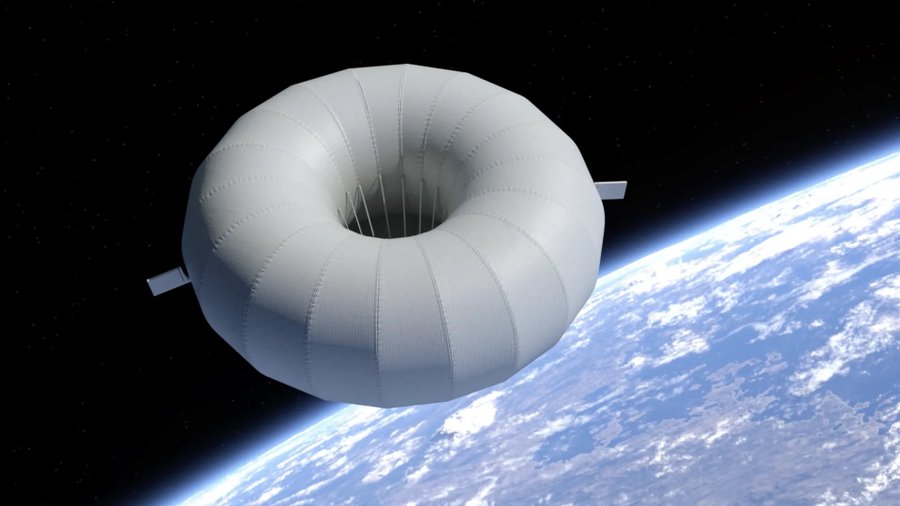The biennial UK Space Conference was held this year at the Scottish Exhibition and Conference Centre on the banks of the Clyde in Glasgow in July. During the conference, which was organised by the UK Space Agency, there was an emphasis on how innovation and enterprise could promote growth in the space industry. And the UK space industry’s ambition is breathtaking.
Conference content: a strategy to enrich the nation – and get a Brit into space
For the uninitiated the UK Space conference, the second to be held, is more about strategy for space economic development than major technical announcements. A confusing cacophony of acronyms and government committees, quangos and bureaucracies dominated parts of the proceedings. However, despite this, the underlying message that emblazoned itself on attendees was that this once small “cottage industry” was being set on its way to becoming a giant.
Head of the UK Space Agency, Dr David Parker. addresses UK Space Conference in May 2013. Courtesy: Flightglobal/David Todd
The UK space industry has now become a major contributor of wealth to the nation with a turnover of £9 billion. The UK Space Agency, led by Dr David Parker, now has a aspirational target for the UK Space industry to capture 10% of the world space market, equating to £40 billion by 2030. On its way it hopes to achieve £19 billion by 2020. Having languished as an overlooked part of UK industry, it is a sign of the UK’s growing importance within the European Space Agency (ESA) as it became its third largest contributor, that ESA’s Communications Satellite Centre was formally announced as moving to a new base at Harwell in Oxfordshire.
Commercial and scientific projects in the burgeoning unmanned sector are viewed as the most important in terms of revenue potential. As such, some stlll argue that the UK should have nothing to do with manned spaceflight citing that it is a distraction from the true wealth giving parts of the sector. Detractors, who publicly laid bear their position at the conference, included Andy Green of UK Space, the trade association of the UK Space Industry.
Nevertheless, despite this criticism there remains the excitement that the United Kingdom is now part of the joint NASA/ESA manned exploration project via its contribution to the ATV-based service module for the Orion manned spacecraft. Even better for the inspiration of school children around the country is that the United Kingdom is to get one of its own, Major Tim Peake, to the International Space Station in 2015. Peake expects to join Scott Kelly and Mikhail Kornienko as they come to the end of their one year stays on the station. Peake was doing his bit to inspire the younger generation by making presentation to school children and supporign the introduction of the new scout “astronautics” badge – designed to encourage studies into model rocketry and space.
Astronautics activity badge for the Scouts – Courtesy: The Scout Association
Reaction Engines has its SABRE engine supported
The big announcement of the conference was made by the UK Government, via its Science minister David Willetts MP. It is to fund the next phase of the development of Reaction Engines’ SABRE air-breathing rocket engine to the tune of £60 million ($91 million). Willetts himself continues to hope that ESA will continue to support the Reaction Engines project and provide actual funding for the engine prototype building phase. Willetts jestfully noted to ESA’s head Jean-Jacques Dordaine to that while Ariane rockets were the present, Skylon was the future.
David Willetts and Alan Bond with a model of SABRE (Synergetic Air-Breathing Rocket Engine) and one of the Skylon spaceplane on the table. Courtesy: Flightglobal/David Todd
Apart from the SABRE engines, Reaction Engines’ CEO and engine designer, Alan Bond, described other technologies required to build the Skylon spaceplane: film cooling for engine nozzles, new glass ceramics and Titatium with silicon carbide strengthening. He also noted that best way to disarm detractors of the technology was to hire them to test it out for themselves. Most notably he appointed the arch-critics of his re-entry strategy, the German Aerospace Centre DLR, to model the re-entry heating of Skylon. Their doubts evaporated after their own computational analysis.
Will the highly regarded Willetts have time to see a launch?
While European Union’s now obvious wish to take over the European Space Agency (ESA) was a talking point at the conference, the other big tea-room point discussion at the conference (which stemmed from suggestions reported in The Daily Telegraph) was that David Willetts could soon be replaced as science and universities minister. Fears about what would happen to the Reaction Engines test programme in this event was assuaged by the fact that the Chancellor of the Exchequer, the Rt Hon George Osborne MP, has also declared himself a supporter of the project.
While David Willetts has previously been criticised for implementing some very unpopular government policies such as increasing university tuition fees, in the space sector at least, David Willetts remains a popular figure with a record which has so far been lauded.
This affection was apparent in the applause after Willett’s gently amusing and self-deprecating speech made at the “Arthurs” conference awards dinner (the Arthur Clarke awards for achievements in the space industry were named after sci-fi writer and “inventor” of the geostationary communications satellite concept, Sir Arthur C. Clarke). Nevertheless, while most of the UK Space sector still wanted to keep “their man”, there was at least some black humour to be had at his expense: a rumour went round that David Willetts had just booked his trip to see an Ariane 5 launch in Kourou…while he still had the chance.
New technologies promise a lot but are not always the best way forward
China had a surprisingly large number of delegates at what was mainly a UK strategy-based conference. No doubt, like the UK government, they had been attracted by the United Kingdom’s advances in reusable technology. in fact, earlier in the conference, during one of the “soapbox” sessions, Shuting Wang of the Chinese Academy of Launch Vehicle Technology (CALT) described how China was beginning to research reusable technologies for launch vehicles.
With respect to China’s long term space plans, later in the conference, Yang Haicheng, Chief Engineer at China Aerospace Science and Technology Corporation (CASC) described how China is planning more manned space laboratories this time with regenerative life support systems to support longer “medium term” astronaut stays. Yang Haicheng also noted that China was also making preliminary studies for a manned lunar landing and deep space exploration.
For unmanned spaceflight, the threat of UAVsto the space imaging business was noted by Andrew Bacon of SEA,. He described how they had the advantage over satellites in having a regular revisit capability. To counter this frequency of imaging advantage, he called for the space industry to invest in a new class of imaging radar spacecraft: orbiting from a very low 160 x 400km orbit. Such spacecraft dubbed Skimsats would use on-board propulsion to counteract the drag. Using a large constellation of such spacecraft, Bacon suggested, could provide 1m resolution radar imagery with only a 3.5 hour revisit time. The only downside would be that the spacecraft concerned would only have a year-long lifespan and that they would need erosion protection from atomic oxygen.
Whether this turns out to be a winner remains to be seen. Picking winners, of course, remains a difficult activity. Strategists and forecasters can often get it wrong as Alberto Tobias of ESA’s ESTEC technial branch noted. He studied ESA’s future strategy documents of the 1980s and described how ESA’s then plans had completely ignored the subject of navigation applications – now one of the main space-related industries around the world.
When it comes to picking future launch vehicles, Didier Le Boulc’h of satellite manufacturer Thales Alenia noted that while new forms of satellite propulsion (e.g. arc jet, plasma and ion thrusters) could be used to raise satellites from low Earth orbit, allowing smaller and cheaper launch vehicles to be used. However, he suggested that such satellite orbit raising could take much more time and that the overall cost of doing this could actually be more than using conventional launch vehicles and conventional on-board chemical propulsion.
While Reaction Engines stole the future launch vehicle headlines at this conference, in the five minute “soapbox” presentations in which speakers could talk on any subject they liked, reusable launch vehicles – albeit on a much smaller scale – were suggested by some speakers. Most impressive of these was that of Tranquillity Aerospace, led by Ray Bainbridge, which has a plan to produce a reusable suborbital launch vehicle and has even started “cutting metal”. If this is Devon 1 vehicle is successful, the firm hopes to go on to produce the Devon 2 two stage orbital system. With a payload of only 2 to 4 kg it can launch one or two cubesats/picosats.
With respect to how to encourage the development and take up of new space technologies, Malcolm Macdonald, of the Advanced Space Concepts Laboratory, Strathclyde Space Institute, suggested that there should be more national prize competitions for such technology.
Matt Perkins, CEO of Surrey Satellite Technology Limited noted that his firm had set up a satellite manufacturing subsidiary in the USA to avoid the problems that ITAR regulations had had on technology transfer. Perkins noted that the UK arm of his firm which is technically a division of EADS, did not have many problems with export applications being accepted. Most are given the government acceptance early in a project.
For the building of new satellites, it was noted by Colin Paynter, CEO of Astrium Limited, that export-credit facilities are still missing in the UK. However, given that pan-European nature of Astrium (owned by EADS), he noted his firm could use such facilities offered by the French COFACE organisation if it needed to.
While the UK is noted in Europe as a leader in Public Private financing, Paynter suggested that for the SME (Small to Medium Enterprise) firms, the UK government should take a larger share of this funding for public-private funding rather than the usual 50:50 split.
Why aren’t there more UK space engineers? It is (the cost of) education stupid
With respect to the training of future space engineers, Ian Osborne of Intellect, noted that British Universities were training good engineers but that they were mainly foreign nationals who then left taking their expertise with them. Likewise he noted that immigration policies were perhaps too tight to allow the flow of this know-how back into the UK.
David Willetts admitted that UK space industry was being affected by a lack of trained graduates but said here and previously that the real weakness lay in postgraduate education and in aerospace graduates who were choosing a career outside of the aerospace sector.
Some have suggested that this is, in fact, a counterproductive result of that other part of government policy that Willetts was charged with executing: the trebling of university tuition fees for first degrees. David Willetts did this despite previously suggesting in his book “The Pinch” that the younger generation was now being improverished by the older “baby-boomer” generation (which Willetts is in).
It has been suggested that tuition fees are now so high that young graduates either feel that they cannot afford to go on with post graduate education, or feel forced to choose careers ouside of aerospace in higher paying sectors in order to pay off their student debts.
Then again, perhaps David Willetts, who is nicknamed “Two brains” due to his apparent intelligence, will have time to work this out for himself if he does go back to the back benches.
David Todd has a small financial interest in Reaction Engines Limited.






